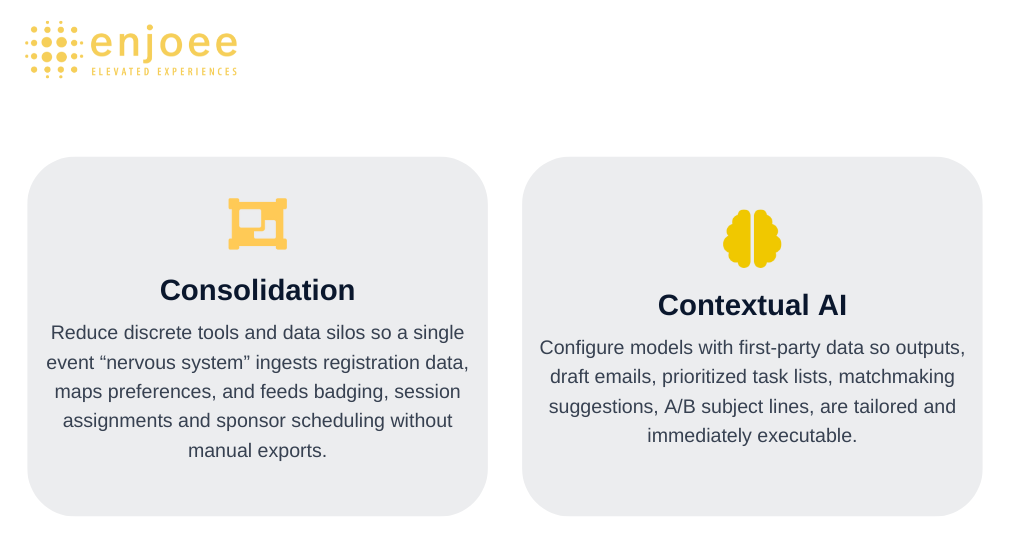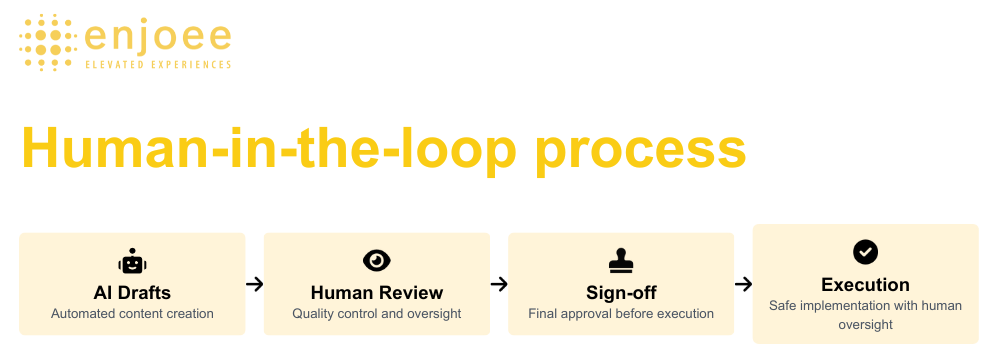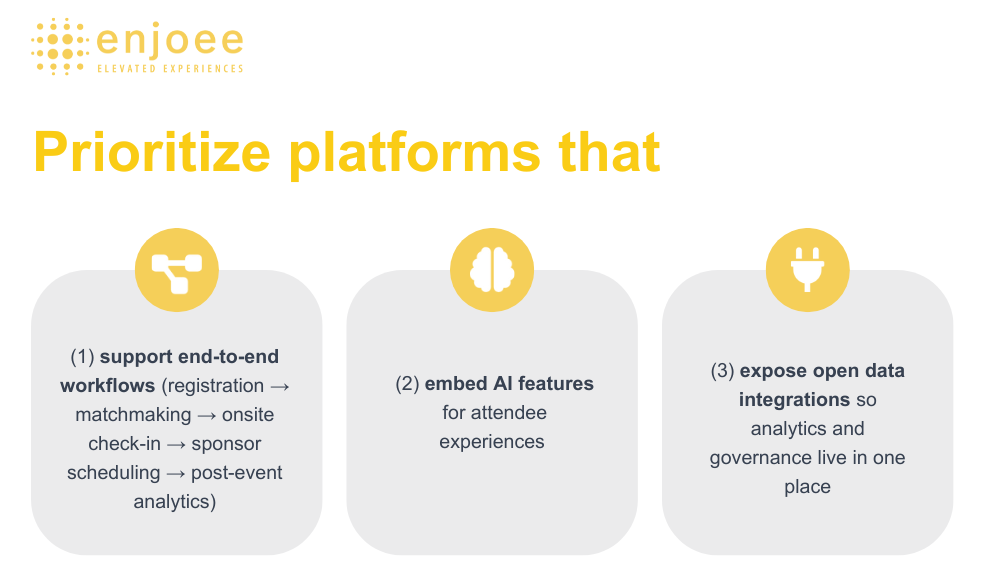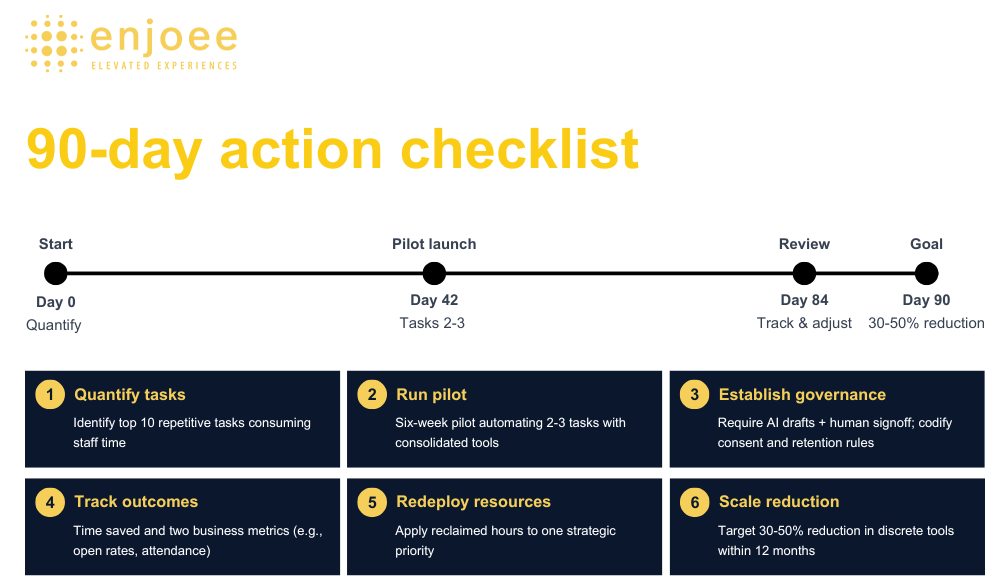Situatie
As businesses navigate increasingly complex operations, the ability to reclaim time from repetitive tasks has become a strategic advantage. Event planners and marketing teams are turning to automation, AI, and integrated data systems not merely to streamline workflows, but to free resources for creativity, strategic initiatives, and value-driven decision-making.
Event production is coordination at scale: suppliers, schedules, content streams and thousands of attendee data points must be aligned under tight deadlines. Currently, 81% of event planners juggle two to five distinct technology solutions (registration, CRM, check-in, content scheduling, staffing). This “multi-tool” reality produces duplication, manual reconciliation, operational friction and missed opportunities for data-driven insight, daily minutes that compound into hundreds of hours per year.
Solutie
What works: consolidation and contextual AI, together
Two design principles reliably separate pilots that deliver value from those that stall:
When combined, these approaches convert many small clicks into coherent automated workflows across agenda formatting, speaker communications, email sequencing, vendor reconciliation, matchmaking, personalization and engagement analytics.
Modest daily efficiencies compound. Automating personalized invitations or reconciling vendor schedules can save an organizer ~4 hours per week, roughly 200 hours per year. Scaled across a team, that is headcount-equivalent capacity without fixed payroll costs. These are conservative estimates, but they reflect wins that teams can capture quickly when technology adoption is paired with simple process redesign.
Risk, governance and adoption
Speed without guardrails invites error: poor matches, tone-deaf messaging or inappropriate data sharing. Mitigate risk with a staged “human-in-the-loop” posture: AI drafts and pre-fills; humans review and sign off. Complement this with clear consent and data-retention policies, outcome instrumentation (open rates, session lift, sponsor meeting conversions) and modest training. Pilots that include manager endorsement and short training cycles see faster adoption and higher worker comfort.
Reclaimed hours are valuable only when redeployed to high-impact activities: distinctive programming, sponsor relationship building, strategic partnerships, or advanced analytics and experimentation. A pragmatic operational cadence is a six-week savings sprint to identify low-value tasks, pilot automations, measure outcomes and convert freed hours into a prioritized strategic backlog.
Technology selection (practical criteria)
Beyond feature checklists, evaluate vendor maturity on integration ease, extensibility (APIs and webhooks), data governance features (consent management, retention controls), and professional services/support for implementation. Run reference checks specifically about migrations and real-world uptime during peak check-in windows. Also consider the total cost of ownership, licensing, implementation, and the internal hours needed to maintain automations, so projected savings are realistic.
90-day action checklist (concise)
Consolidation plus contextual AI, implemented with human oversight and a plan for redeployment, turns recovered hours into a durable competitive advantage: smoother operations, richer content and stronger sponsor outcomes. Events that master this conversion will demonstrate measurable business impact.
By consolidating multiple event tools and leveraging contextual AI, teams can save up to 200 hours per year per person, turning repetitive tasks into automated workflows and freeing capacity for creativity, strategy, and high-impact initiatives.
Book a demo with Enjoee today (www.enjoee.it) and discover how your team can transform these reclaimed hours into smoother operations, richer attendee experiences, and stronger sponsor engagement, making every event not just more efficient, but strategically impactful.





Leave A Comment?